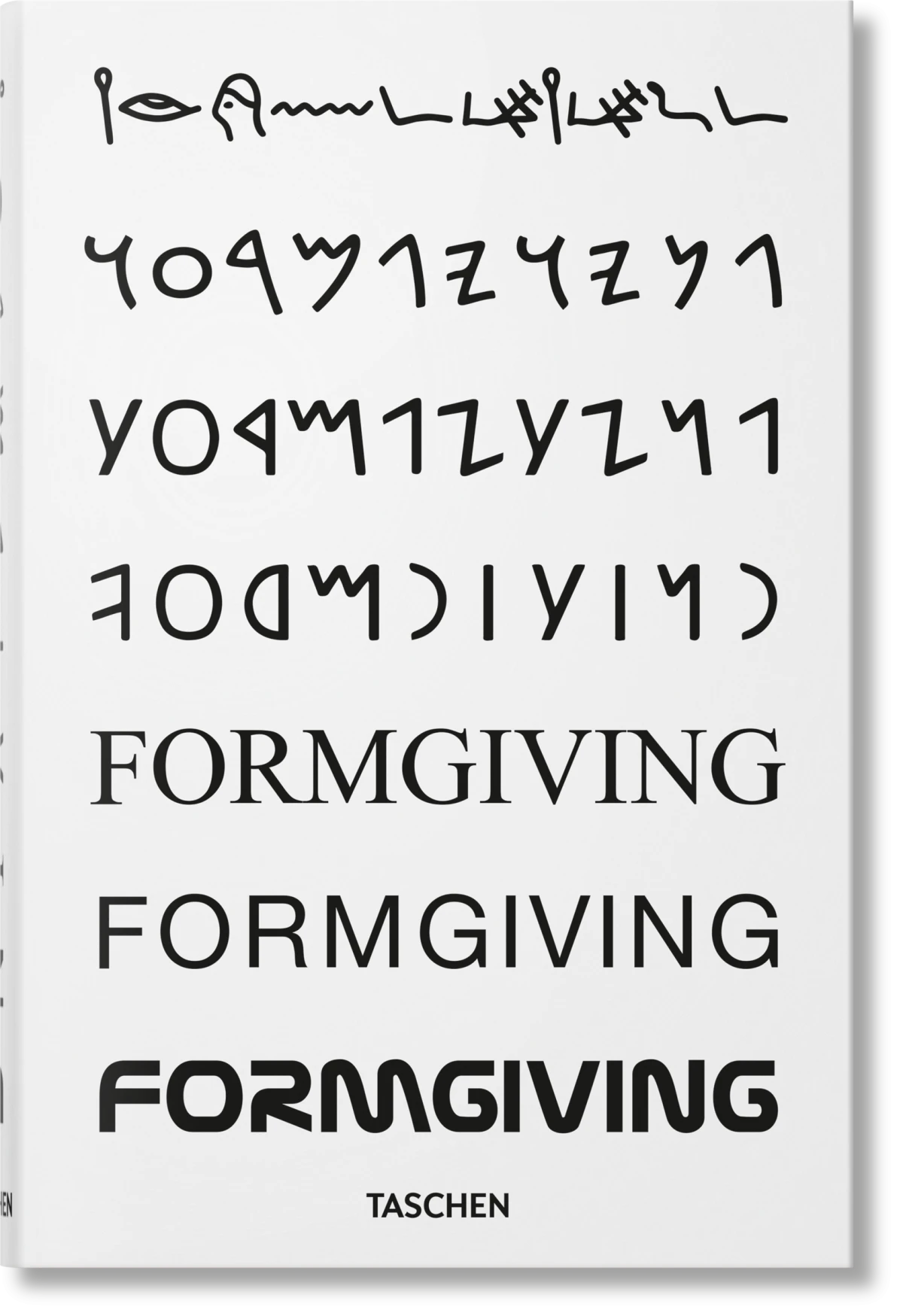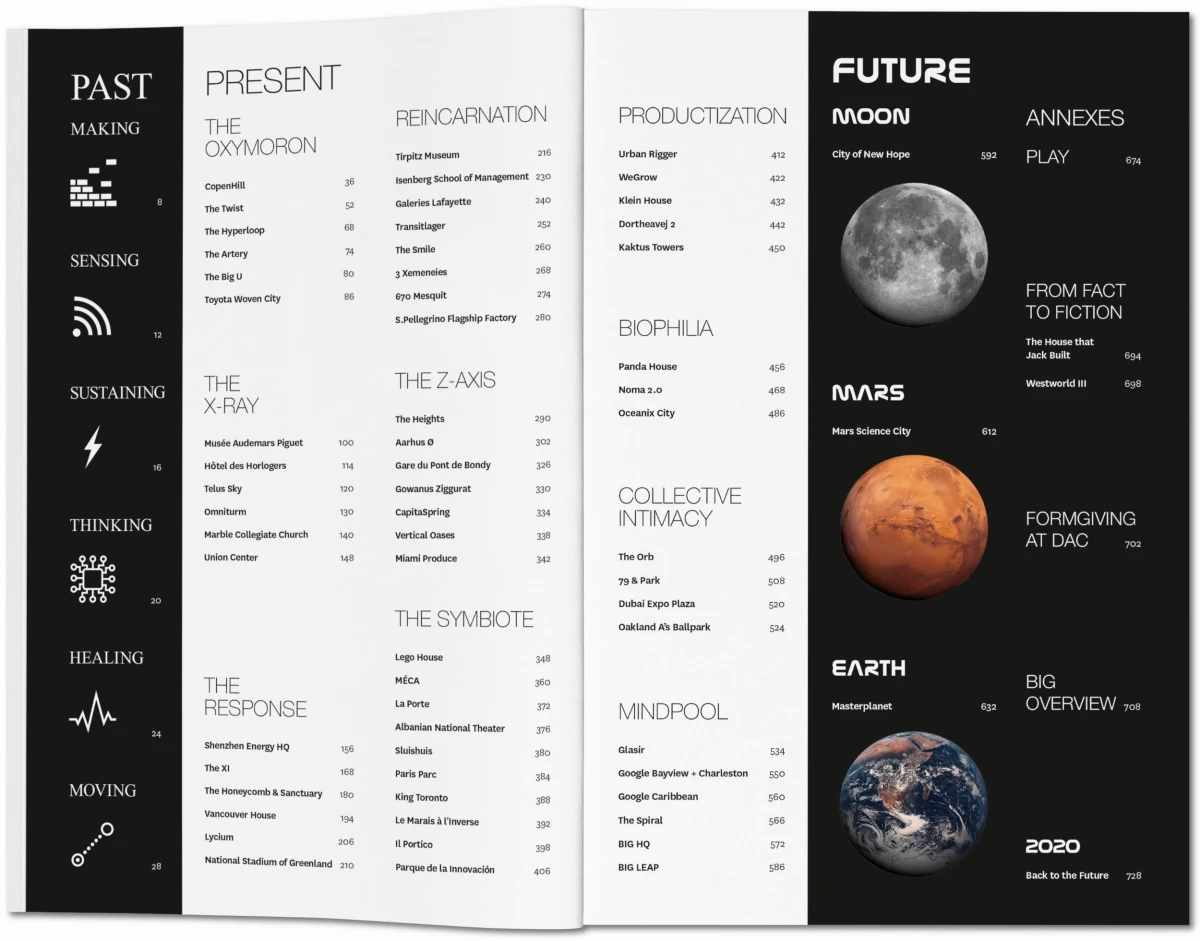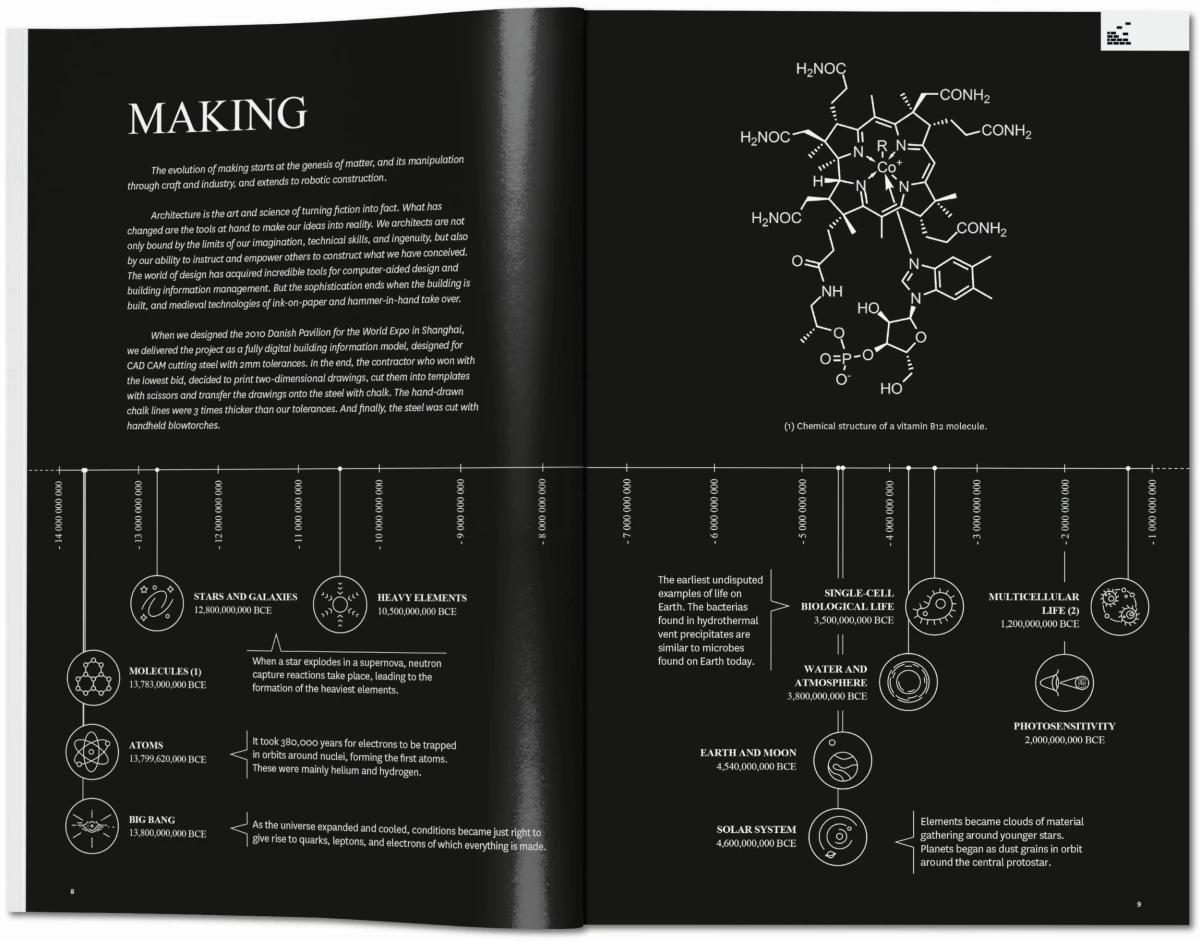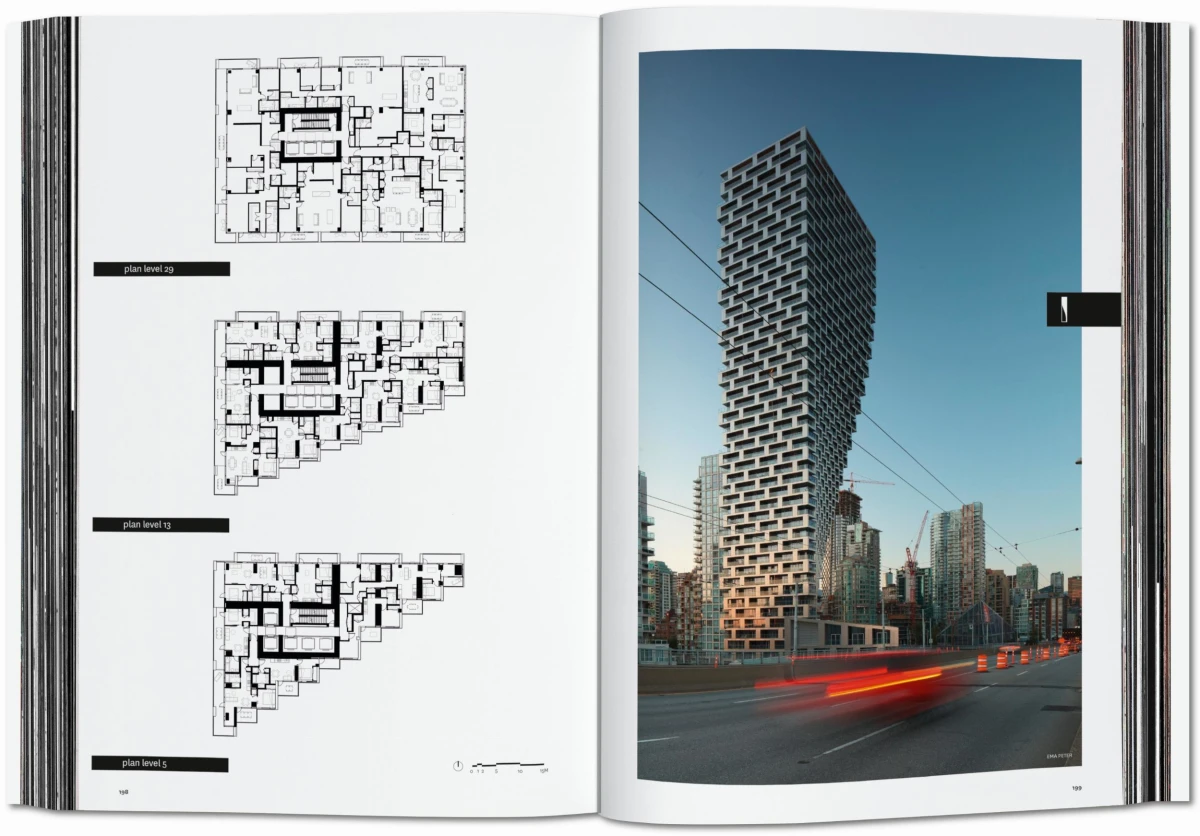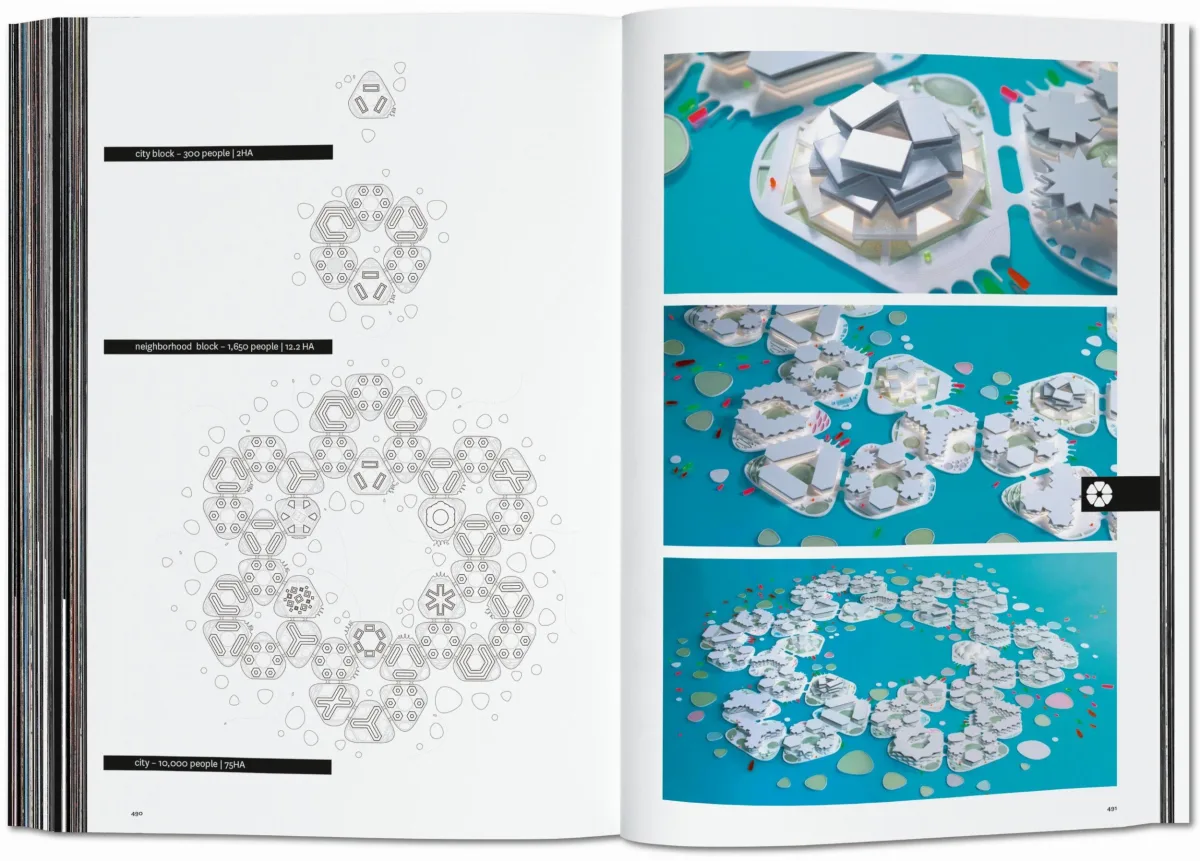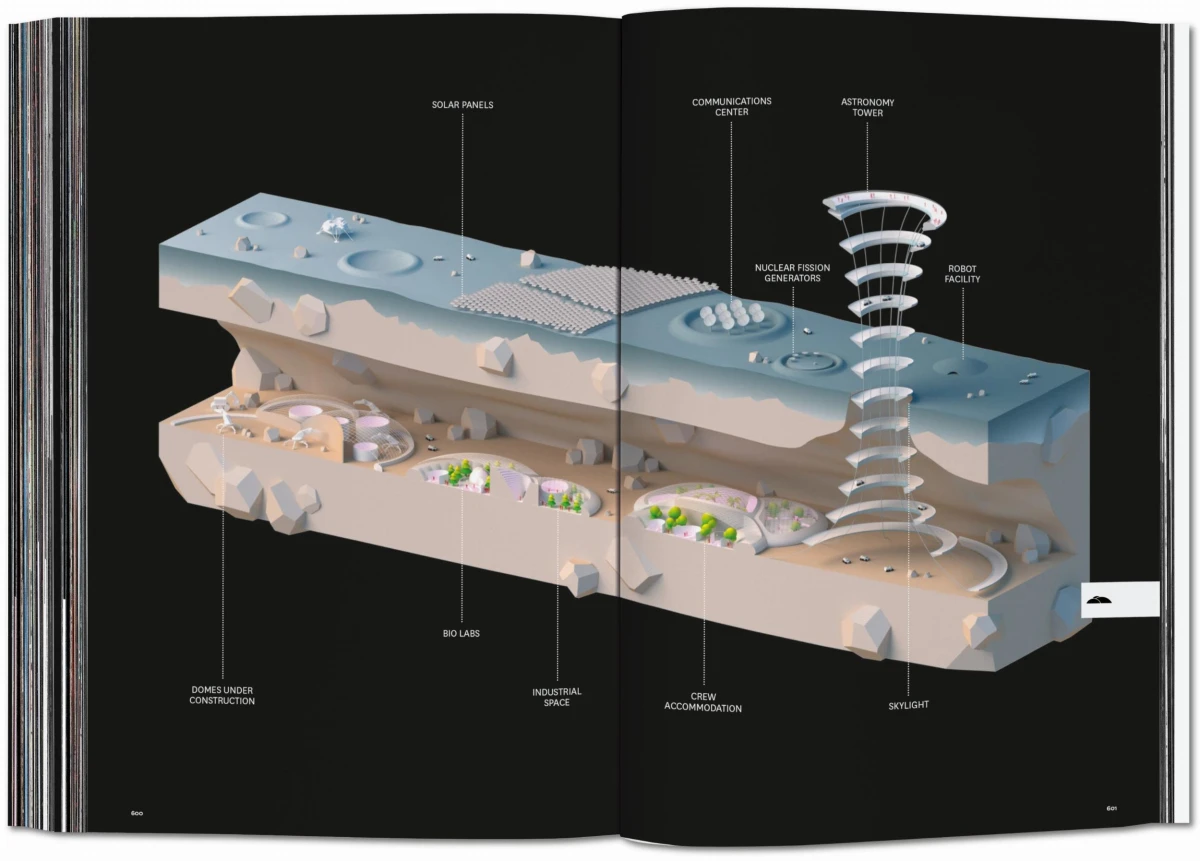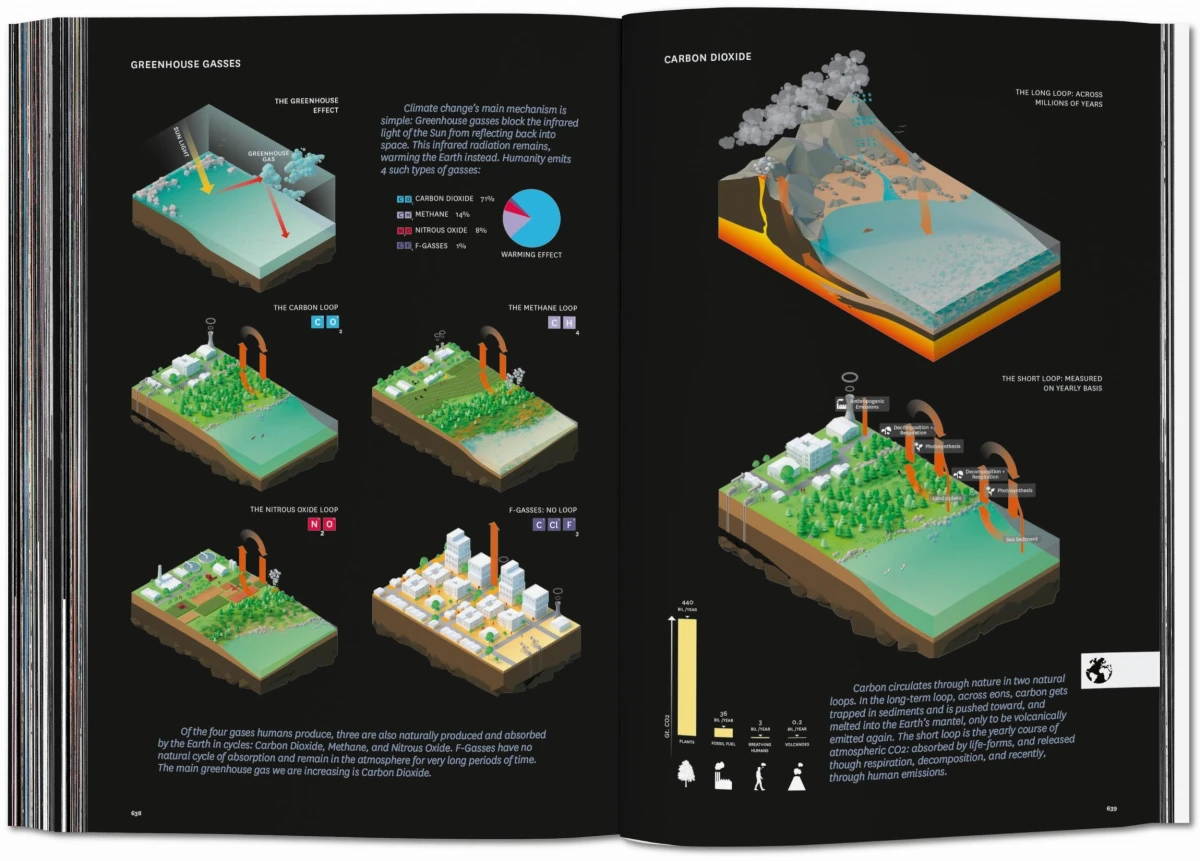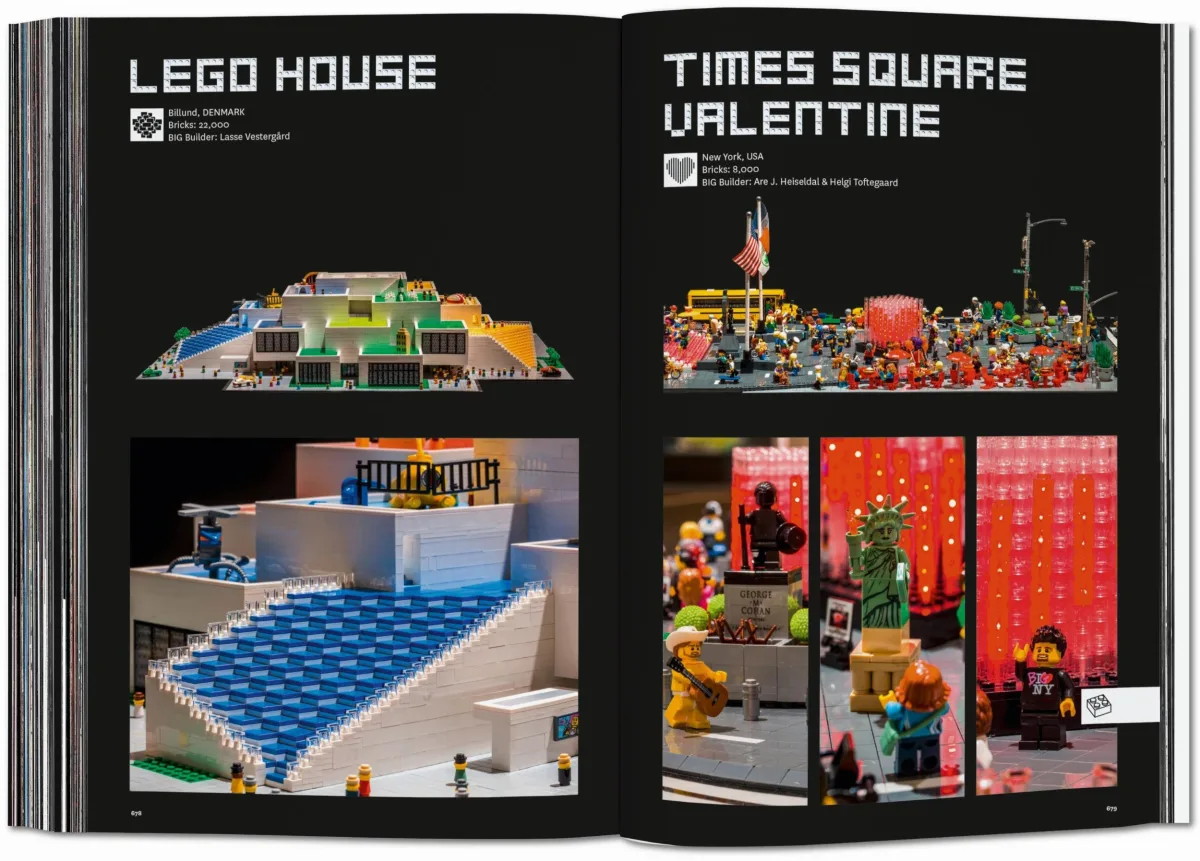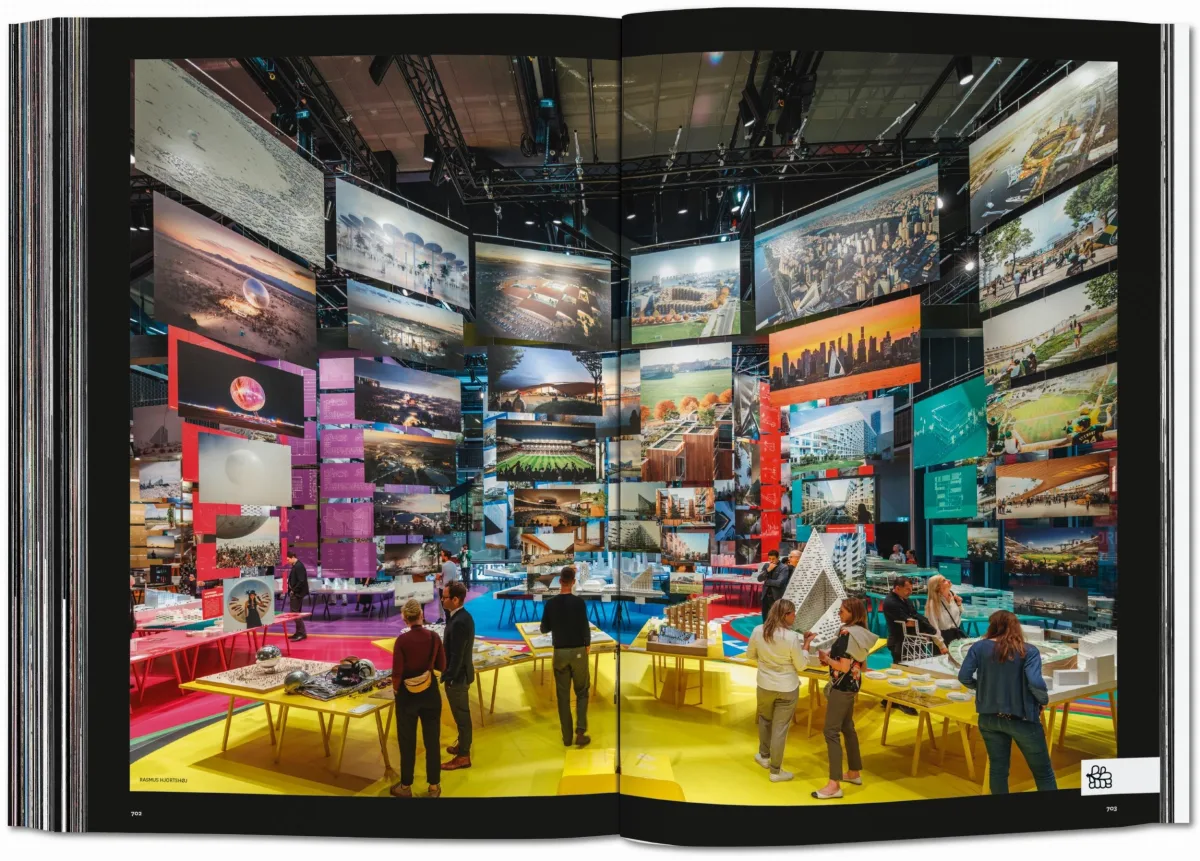1 / 9
BIG. Formgiving. An Architectural Future History
50Disponibilità: DisponibileFormgiving. An Architectural Future History, di Bjarke Ingels Group, è il terzo capitolo della sua trilogia TASCHEN. Ingels guarda al futuro remoto dell'architettura, affrontando le principali tendenze del design e lo sviluppo dell'intelligenza artificiale, della sostenibilità e della migrazione interplanetaria, plasmando il mondo di domani.
Softcover, 6.4 x 9.8 in., 4.37 lb, 736 pagine

BIG. Formgiving. An Architectural Future History
50Giving Form to the Future
Completing BIG’s trilogy: Formgiving. An Architectural Future History
Formgiving. An Architectural Future History by BIG (Bjarke Ingels Group), is a visionary attempt to look at the horizon of time. The Danish word for “design” is “formgivning,” which literally means to give form to that which has not yet taken shape. In other words, to give form to the future. Using our power to give form, rather than allowing the future to take shape, is more important now than ever, as humankind’s impact on the planet continues to increase and pose ever greater challenges to all life forms. Architecture plays a special role by proposing spaces for our lives that are fragments of the future in the making. William Gibson’s words embody architecture’s role perfectly: “The future is already here—it’s just not evenly distributed.”
With Formgiving, BIG presents the last part of its trilogy, which began with Yes is More, one of the most successful architectural books of its generation, and continued with Hot to Cold. An Odyssey of Architectural Adaptation. The book is presented in a timeline, stretching from the Big Bang into the most distant future. Projects are structured around six strands of evolution—“Making,” “Sensing,” “Sustaining,” “Thinking,” “Healing,” and “Moving”—the multimedia-based, interdisciplinary concepts encompassing the building industry.
Culture, climate, and landscape, as well as all the energies derived from the elements—the thermal mass of the ocean, the dynamics of currents, the energy and warmth of the sun, the power of the wind—are incorporated into these projects. Throughout more than 700 pages, Bjarke Ingels presents his personal selection of projects, including the 12,000-square-meter LEGO House in Denmark, the human-made ecosystems floating on oceans, the redesign of a World War II bunker into a contemplative museum, and the ski slope-infused power plant celebrating Copenhagen’s commitment to carbon neutrality. Through architecture and design, BIG gives shape to a sustainable and simultaneously colorful world.
Bjarke Ingels: “To feel that we have license to imagine a future different from today, all we have to do is look back ten years, a hundred years, a thousand years, to realize how radically different things were then than they are today. The same will be true if we can look ahead with the same clarity of vision. As we tackle the complexities of everyday life, these six evolutionary trajectories allow us to place a firm gaze on the horizon of time to prevent us from being derailed by the random distractions of today. Since we know from our past that our future is bound to be different from our present, rather than waiting for it to take shape on its own, we have the power to give it form.”
More than 65 projects document BIG’s global work through the eyes of their users, from the drawing board to global construction sites and finished projects. Throughout the book are insights into developments that reach five, ten, or fifty years into the future, and evidence of BIG’s intransigence to reach beyond the ordinary, and beyond worlds, to contribute to the future with each project. Each step not only reveals a world that resembles our dreams but also already tries to realize these dreams pragmatically. We have the power to create the world of tomorrow!
The book features:
With Formgiving, BIG presents the last part of its trilogy, which began with Yes is More, one of the most successful architectural books of its generation, and continued with Hot to Cold. An Odyssey of Architectural Adaptation. The book is presented in a timeline, stretching from the Big Bang into the most distant future. Projects are structured around six strands of evolution—“Making,” “Sensing,” “Sustaining,” “Thinking,” “Healing,” and “Moving”—the multimedia-based, interdisciplinary concepts encompassing the building industry.
Culture, climate, and landscape, as well as all the energies derived from the elements—the thermal mass of the ocean, the dynamics of currents, the energy and warmth of the sun, the power of the wind—are incorporated into these projects. Throughout more than 700 pages, Bjarke Ingels presents his personal selection of projects, including the 12,000-square-meter LEGO House in Denmark, the human-made ecosystems floating on oceans, the redesign of a World War II bunker into a contemplative museum, and the ski slope-infused power plant celebrating Copenhagen’s commitment to carbon neutrality. Through architecture and design, BIG gives shape to a sustainable and simultaneously colorful world.
Bjarke Ingels: “To feel that we have license to imagine a future different from today, all we have to do is look back ten years, a hundred years, a thousand years, to realize how radically different things were then than they are today. The same will be true if we can look ahead with the same clarity of vision. As we tackle the complexities of everyday life, these six evolutionary trajectories allow us to place a firm gaze on the horizon of time to prevent us from being derailed by the random distractions of today. Since we know from our past that our future is bound to be different from our present, rather than waiting for it to take shape on its own, we have the power to give it form.”
More than 65 projects document BIG’s global work through the eyes of their users, from the drawing board to global construction sites and finished projects. Throughout the book are insights into developments that reach five, ten, or fifty years into the future, and evidence of BIG’s intransigence to reach beyond the ordinary, and beyond worlds, to contribute to the future with each project. Each step not only reveals a world that resembles our dreams but also already tries to realize these dreams pragmatically. We have the power to create the world of tomorrow!
The book features:
- previously unpublished essays by Bjarke Ingels,
- award-winning photography by Laurian Ghinitoiu, Iwan Baan, and Rasmus Hjortshøj, among others,
- planetary proposals for habitats on the Moon and research centers on Mars,
- 20 LEGO master-builder models of BIG’s work,
- a glimpse of Masterplanet—BIG’s ongoing work on a collective, crowdsourced masterplan guide for sustaining our planet.
BIG. Formgiving. An Architectural Future History
Softcover, 16.3 x 25 cm, 1.98 kg, 736 pagineISBN 978-3-7544-0076-0
Edizione: SpagnoloISBN 978-3-8365-7704-5
Edizione: IngleseScarica qui le immagini del prodotto
4.8
Big formgiving
30 giugno 2022
Très bienEl futuro en nuestras manos
29 gennaio 2022
Los caminos que definirán lo humano se dibujan en este libro. Como si lanzara una piedra a un estanque, las propuestas de arquitectos y diseñadores para trazar una nueva forma de abordar nuestra relación con los espacios en los que vivimos, dibujan las hondas que se abren en la piel del futuro. No podemos escribir la historia del futuro, pero si nos es dado soñarlos. Este libro nos permite, por primera vez, asomarnos a esos sueños.Big
22 dicembre 2021
Fantástico libro para una estudiante de arquitectura. Acierto seguro.Aufwendig Konzipiert
10 dicembre 2021
Habe mir dieses Buch als Inspirationsquelle für ein bestimmtes Fach meiner Uni geholt. Schöne Zeichnungen und Formkonzepte. Leider ist das Buch etwas klein, deswegen auch nur 4 Sterne. Sonst wärmstens zu empfehlen :)INSIDE BIG UNIVERSE
31 ottobre 2021
Exciting insight into the universe and the way BIG thinks. I recommend the purchaseMeisterhafte Gestaltung
29 ottobre 2021
Alleine schon die Typografie, das Layout und die Gestaltung sind es wert dieses Buch näher zu betrachten. Durch die hochwertige Produktion, den hervorragenden Druck und die Kontraste ist jede Seite ein Hingucker. Gestaltet in einem super-modernen bis zeitlosen Stil deckt dieses Buch die ganze Geschichte von Form und Design vom Anfang der Zeit sogar bis hin in die Zukunft ab. Wer Design und Gestaltung mag wird dieses Buch lieben.
